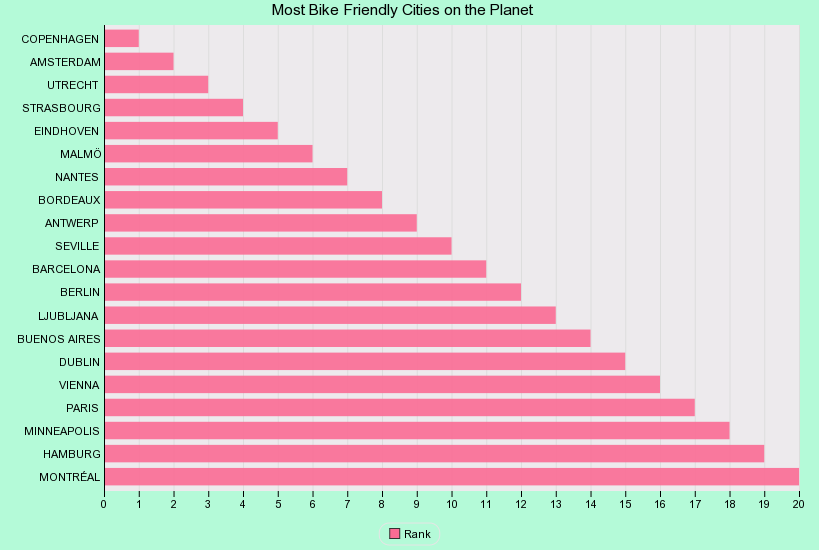This chart shows Most Bike - Friendly Cities on the Planet.
Bicycle-friendly policies and practices help some people feel more comfortable about traveling by bicycle with other traffic. The level of bicycle-friendliness of an environment can be influenced by many factors resulting from town planning and cycling infrastructure decisions.
Bicycling is often used as an alternative to travel by car. Automobile travel provides increased mobility and convenience for travelers, but also has high costs associated with taxes, insurance, fuel, maintenance, road construction and repair, and contributes to air pollution. When infrastructure is built to allow consumers to choose between automobile and other forms of travel, it reduces a community's automobile dependency and allows for more efficient land usage.
Cycling infrastructure refers to all infrastructure which may be used by cyclists. This includes the same network of roads and streets used by motorists, except those roads from which cyclists have been banned, plus additional bikeways that are not available to motor vehicles, such as bike paths, bike lanes, cycle tracks and, where permitted, sidewalks, plus amenities like bike racks for parking and specialized traffic signs and signals.
A bikeway is a lane, route, way or path which in some manner is specifically designed and /or designated for bicycle travel. Bike lanes demarcated by a painted marking are quite common in many cities. Cycle tracks demarcated by barriers, bollards or boulevards are quite common in some European countries.
9 years ago

